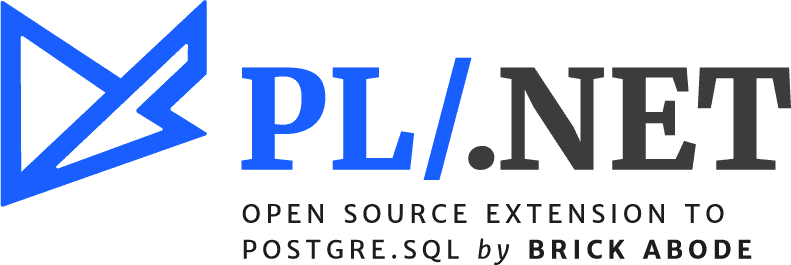01. Home

1. What is pldotnet?
PL/.NET, also known as pldotnet is a powerful and free add-on module that enhances the functionality of PostgreSQL:tm: by integrating Microsoft's .NET framework. It enables developers to use C# and F#, two popular programming languages, as loadable procedural languages, allowing them to create stored procedures and triggers on the .NET platform. The development of pldotnet was led by the team at Brick Abode and was officially released in January 2023.
With pldotnet, developers can write code directly in the database using the .NET framework's robust application development environment, providing them with the full benefits of the .NET framework. One of the major advantages of pldotnet is its ability to perform complex operations in the database, making it more efficient and effective than other external procedural languages. It is an excellent option for developers who are looking to extend the capabilities of their PostgreSQL database while taking advantage of the latest technologies.
2. Features
2.1 Current support
- The languages C# and F# are both fully supported for functions,
procedures, and
DOblocks. - 38 out of 45 PostgreSQL user (non-system) data types are supported, along with their arrays. All data types are nullable.
- You can enter code directly through the
CREATE FUNCTIONcommand or load it from a pre-compiled assembly. - Our benchmarks show that performance is very good, surpassing all other external PL implementations.
- We have 820 unit tests that cover all types, plus their arrays and nulls, in both C# and F#.
- Security is enhanced through the use of a dotnet Assembly Load Context for isolating code for each function.
2.2 Future support
- We plan to add support for missing data types such as multirange, enumerated, and composite.
- Basic SPI is currently working privately, but we aim to make it 100% Npgsql-compatible.
- We have prototypes for triggers and plan to fully implement them.
- Set-Returning Functions will be mapped to
IEnumerable<T>for both C# and F#. - Output parameter support will also be added.
3. Other documentation sources
3.1 Doxygen documentation
To generate the Doxygen documentation,
you need to have the doxygen and make packages installed on your
machine. You can install them by running the following command:
sudo apt-get install -y doxygen make
Once the packages are installed, navigate to the project directory and
run make documentation to generate the Doxygen documentation in the
docs/html/ directory.
3.2 Whitepaper
Our white paper, titled "The pl/dotnet Extension to PostgreSQL, v0.9",
provides detailed information about the project and can be found in the
docs/ subdirectory within the source code. Alternatively, you can
download the white paper directly from the Brick Abode website.
To generate your own copy, it is required to have make and plantuml
packages installed on your machine. ou can install them using the command
sudo apt-get install -y doxygen plantuml. Next, navigate to docs/img
directory in pldotnet repository and run these commands:
# Build our performance graphs
make pldotnet-performance-comparison.png
# Build our sequence diagram
make pldotnet-sequence-diagram.png
To finalize, you can use the TeX distribution of your choice to create a copy of the whitepaper.